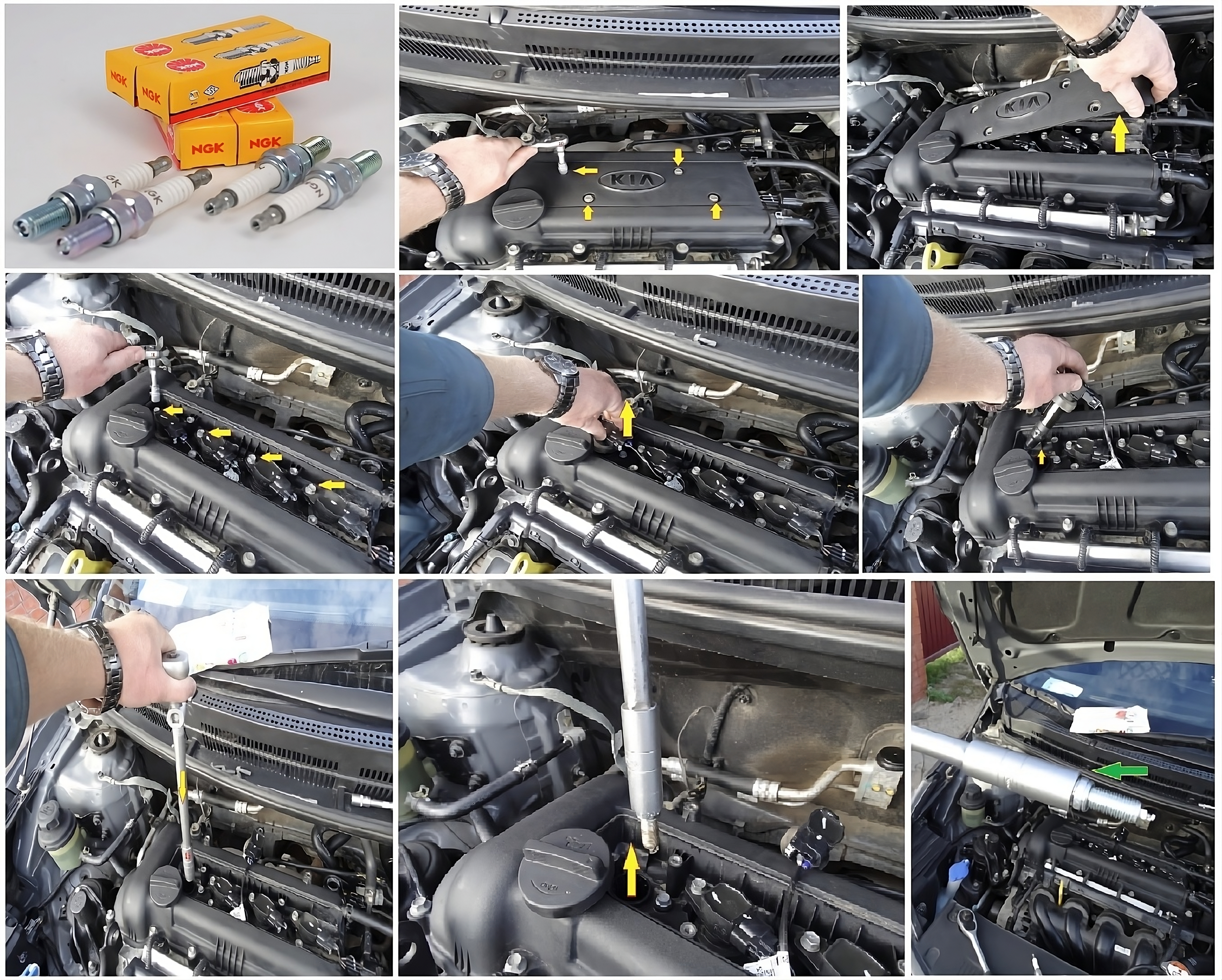Ensuring the proper replacement of spark plugs is crucial for maintaining your vehicle’s engine efficiency. If you’re uncertain about this process, we’ve provided a comprehensive step-by-step guide to help you along the way.

Step 1: Prepare Tools and Materials for Spark Plug Replacement
Before you begin, gather the necessary tools and materials:
Spark plug wrench.
Owner’s manual.
New spark plugs compatible with your vehicle.
Preparing Your Vehicle
Park the vehicle on a level and stable surface.
Ensure the engine is cold to prevent burns.

Step 2: Locate the Spark Plugs
Locate your vehicle’s engine compartment.
Open the hood to access the engine compartment.
Identify the spark plugs within the engine compartment.
Step 3: Remove Engine Cover and Foreign Objects
Step 3.1: Remove the Engine Cover
If your vehicle has an engine cover, carefully follow the manufacturer’s instructions to remove it.
Step 3.2: Remove Parts Blocking Access
Identify any components obstructing access to the spark plugs, such as cables, hoses, or air intake systems.
Carefully separate or remove these components, making note of their positions for reassembly.
Step 4: Disconnect Spark Plug Wires
Carefully disconnect the wires from the old spark plugs, paying attention to their order. Consult the instruction manual if necessary.

Step 5: Remove the Old Spark Plugs and Inspect the New Ones
Removing Old Spark Plugs
Gently remove the old spark plugs from their sockets using a spark plug wrench. Be cautious not to damage the spark plug threads or cap.
Inspect New Spark Plugs Before Installation
Examine the new spark plugs to ensure they meet the specifications outlined in the owner’s manual.
Check the correct spark plug gap and adjust if necessary.
Ensure the new spark plugs are in good condition, without damage to the electrodes or insulation.

Step 6: Install New Spark Plugs and Reassemble the Engine
Using a spark plug wrench, carefully insert the new spark plugs into the designated slots, following the torque value specified in the owner’s manual for a proper seal.
Reassemble any engine components that were removed to access the spark plugs, such as cables, hoses, or air intake systems.
Reconnect the wires to the new spark plugs in their original order.
Securely close the hood.
Start the engine and verify that it runs correctly.
Replacing spark plugs is a manageable task that most car owners can handle. If you encounter difficulties, consult your owner’s manual or seek assistance from a qualified auto mechanic.
Frequently Asked Questions (FAQ)
How do I know when to replace spark plugs?
You should consider replacing spark plugs if you notice signs of poor engine performance, such as rough idling, decreased fuel economy, or difficulty starting your vehicle. Refer to your vehicle’s maintenance schedule in your owner’s manual for specific recommendations.
What tools are needed to replace spark plugs?
To replace spark plugs, you will need the following tools and materials:
New spark plugs tailored to your vehicle
Spark plug wrench
Threaded spark plug (to protect spark plug holes from dirt and moisture)
Brush for removing dirt and dust
Can I replace spark plugs myself without prior car repair experience?
Yes, you can replace spark plugs yourself, even without prior car repair experience. It’s a relatively simple process, but it’s important to follow the correct steps and consult the user manual if needed.
How do I choose the right spark plugs for my car?
You can choose the right spark plugs for your vehicle by checking your owner’s manual or visiting the manufacturer’s website. The manual provides technical data and recommendations for suitable spark plugs based on your vehicle’s make and model.
What common mistakes should I avoid when replacing spark plugs?
Common mistakes to avoid when replacing spark plugs include over- or under-tightening, using the wrong type of spark plugs, incorrect positioning of new spark plugs (if needed), and failing to retighten the spark plugs in the correct order. Always follow the manufacturer’s instructions, and seek professional help if in doubt.
